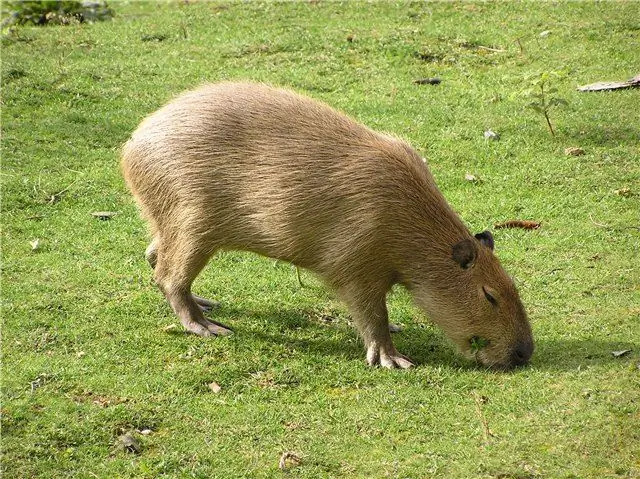Many are accustomed to the fact that rodents are small animals, but there is also the largest rodent in the world, which is called the capybara. These amazing animals are common in South America.

The height of the capybara, this is its second name, is about 60 cm. In length, individuals can reach 1.3 meters. The weight of the capybaras is approximately 35 to 60 kg. Rodents have a large muzzle, a feature of the limbs is the presence of three fingers on the hind legs, and four on the front. The coat is hard, reddish in color. The capybara has 20 teeth, the lateral ones grow throughout the life of the animal.
The animal fully justifies its name "capybara", because it knows how to swim perfectly, and the membranes between the fingers help it in this. Most of the day he prefers to be in the water, because there are many predators who want to feast on it. She is hunted by alligators, jaguars, anacondas. Fleeing from the threat, the capybara runs into the water, where it takes cover completely, and a nose remains on the surface, which helps it breathe.
The food of the capybara consists of a variety of grasses, fruits, aquatic plants and hay. The animal is often found in zoos, and some people keep it as a pet. In this case, the capybara is fed with special food, and sometimes fish is given.
The capybara is a social animal that suffers from loneliness. In nature, they are grouped into groups of 20, dominated by males. These rodents communicate with the help of whistling and barking sounds, as well as clicks.
The female's pregnancy lasts 5 months. The breeding process in capybaras takes place in the aquatic environment. They can breed throughout the year, but they prefer to do it in rainy times. They give birth to up to 8 cubs, which are covered with hair and have teeth. Newborn capybaras are fed by the mother for up to three months.


